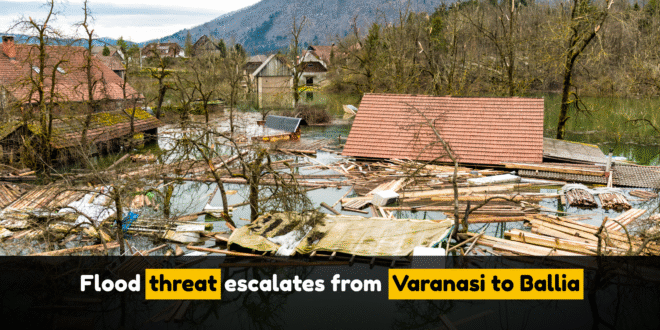The flood situation in eastern Uttar Pradesh has taken a serious turn as rising Ganga water levels are now threatening areas from Varanasi to Ballia, submerging ghats, disrupting local life, and triggering emergency measures.
Alarming Rise in River Levels Across Districts
In the last 24 hours, water levels of the Ganga river have risen sharply, creating a high-alert situation. In Varanasi, the river has climbed by 0.7 meters, reaching 68.43 meters, inching closer to the danger level of 70.26 meters. The situation is worse in Ballia, where the river has crossed the danger mark by over 1 meter. Ghazipur and Mirzapur have also reported increases, indicating a widespread flood threat across the region.
Emergency Response Activated by Authorities
Flood control teams, including units from the National Disaster Response Force (NDRF) and Provincial Armed Constabulary (PAC), have been deployed. Control rooms are operational 24/7 in affected districts. With Ballia already in the danger zone, officials have begun preparations for possible evacuations. Rescue boats, relief camps, and flood outposts have been positioned strategically along the Ganga and its tributaries.
Weather Forecast Suggests Worsening Conditions
Weather predictions show continuous heavy rainfall in several parts of Uttar Pradesh, especially the western and central regions, over the coming days. This rainfall could further raise water levels in rivers and streams feeding into the Ganga, worsening the situation for downstream districts like Ballia and Ghazipur.
Public Caution and Government Advisory
Citizens living in flood-prone or low-lying areas are being urged to stay alert. Government advisories warn against venturing near rivers or ghats.
Conclusion
The flood risk from Varanasi to Ballia is now a matter of growing concern as the Ganga continues to rise, affecting daily life, religious practices, and infrastructure. Authorities remain on high alert and are urging residents to cooperate with safety protocols. The coming days will be critical in determining whether water levels stabilize or lead to a more severe disaster.




